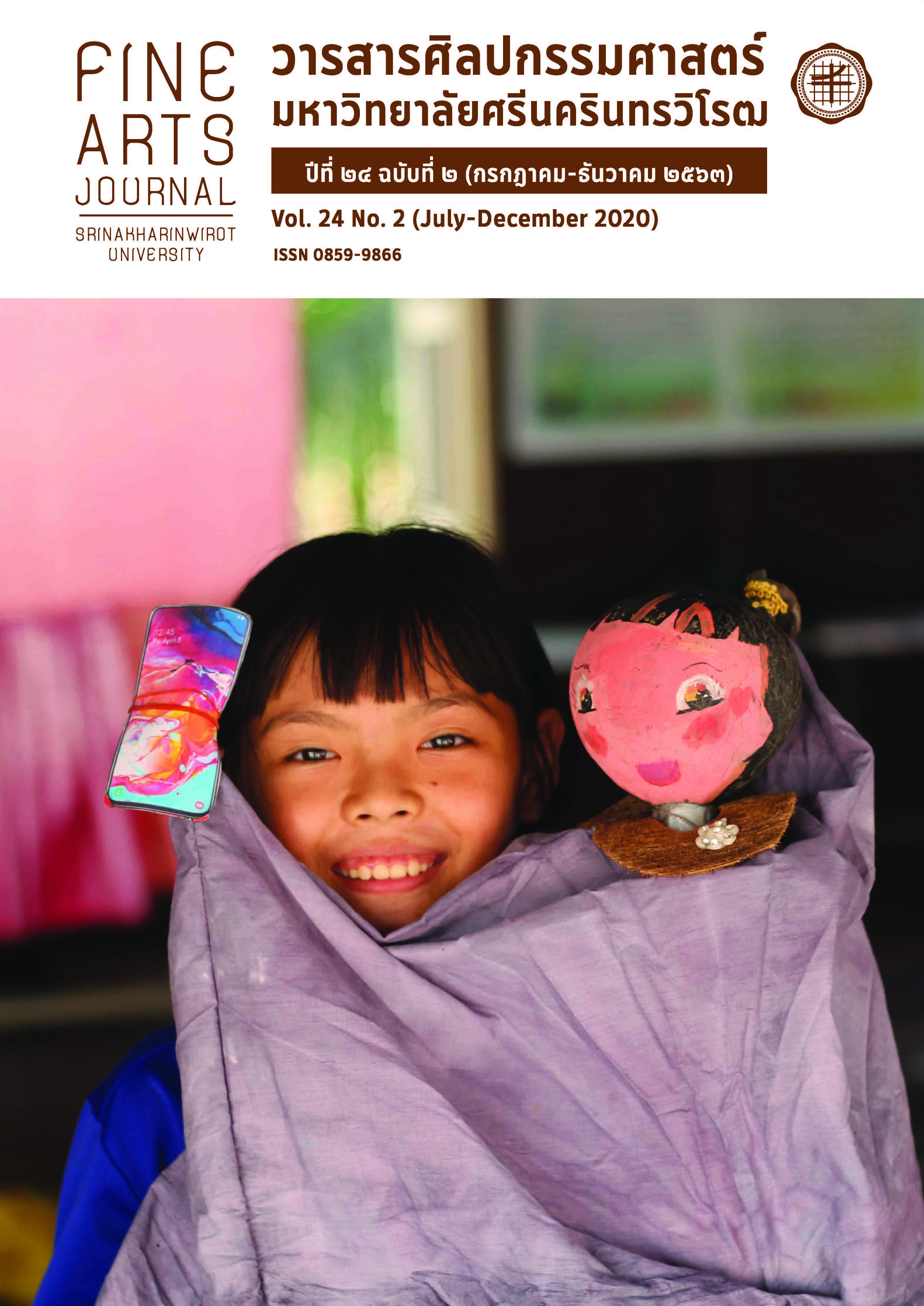DESIGNING AN E-BOOK FOR STUDYING ART OF CHINESE SHRINE IN BANGKOK
Keywords:
Chinese Shrine, Identity, Semiotic Theory, Art of Chinese shrineAbstract
The purposes of this research were (i) to design an e-book consisting of infographics symbolizing the 10 Chinese Shrines in Samphanthawong District and (ii) to broaden knowledge and understanding of Chinese arts in Thailand. The questionnaires for satisfaction assessment were distributed to tourists who travelled in the area around the 10 shrines. The 352 participants were selected from 4,000 tourists through the sampling technique proposed by Krejcie and Morgan (1970) and the average age of the participants were 18-25 years. The subject selection error is 0.5 with 95% of the reliability level. The research instruments were 1) the questionnaire for collecting data about the opinion towards the e-book about the art of Chinese shrines and 2) e-book for mobile phone. The Index of Item Object Congruence was conducted with these two main instruments by 3 specialists. The overall assessment results were at good level (0.67-1.00). The data from 5-Point Likert Scaling questionnaire were analyzed to find mean and standard deviation of the satisfaction level. The Semiotic Theory of C. Peirce was also utilized in the data analysis.
The research results show that the satisfaction of the participants was at very good level ( = 4.63, S.D = 0.53). The satisfaction could be categorized into 5 factors; factor of symbol design was at very good level ( = 4.92, S.D = 0.26), factor of beauty was at very good level ( = 4.79, S.D = 0.40), factor of use of color representation was at very good level ( = 4.98, S.D = 0.16), factor of composition was at very good level ( = 4.65, S.D = 0.48), factor of displaying on mobile phone was at very good level ( = 4.88, S.D = 0.30), and factor of use of font was at very good level = 4.88, S.D = 0.32). The utilization of an e-book provides opportunities for the new generation to experience and receive cultural and historical knowledge easily through the application of modern technology.
Downloads
References
กรมศิลปากร. (2534). คำให้การขุนหลวงวัดประดู่ทรงธรรม เอกสารจากหอหลวง. นนทบุรี:มหาวิทยาลัยสุโขทัยธรรมาธิราช.
กาญจนา แก้วเทพ. (2552). การวิเคราะห์สื่อแนวคิดและเทคนิค. กรุงเทพมหานคร: จำกัดการพิมพ์.
อชิรัชญ์ ไชยพจน์พานิช. (2557). สถาปัตยกรรมศาลเจ้าจีนในกรุงเทพฯ ช่วงพุทธศตวรรษที่ 24-25: ภาพสะท้อนตัวตนคนจีนในสังคมไทยสมัยรัตนโกสินทร์. กรุงเทพมหานคร: มหาวิทยาลัยศิลปากร.
Krejcie, R.V., & Morgan, D.W. (1970). Determining sample size for research activities. Educational and Psychological Measurement, 30, 607-610. DOI: 10.1177/001316447003000308
Müller-Brockmann, J. (2001). Grid systems in graphic design: A visual communication manual for graphic designers, typographers and three dimensional designers. (n.p.): Niggli Verlag.
Peirce, C.S. (1931). The collected papers of Charles Sanders Peirce. Cambridge: Harvard University Press.






